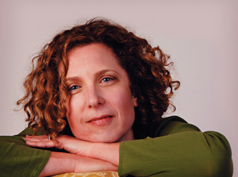We all want our daughters to feel like princesses, but do we really want them constantly asking themselves, “Who is the fairest of them all?”
From a very young age, girls learn to define themselves from the outside in, and a large body of research suggests that our culture’s emphasis on physical beauty is the root of problems such as negative body image, depression, eating disorders and high-risk sexual behavior.
Just ask writer and cultural critic Peggy Orenstein—she’s been studying girls for years as a contributing writer for The New York Times Magazine and the author of four books. In her latest, “Cinderella Ate My Daughter: Dispatches from the Front Lines of the New Girlie-Girl Culture,” Orenstein gives parents a whirlwind tour of today’s girl culture: from trade shows plastered with pink and little girl beauty pageants to a Miley Cyrus concert, and from fairytales to Facebook.
Orenstein sat down with Make It Better to talk about why princesses are the pits.
MIB: You write that Disney’s decision to heavily market princesses has brought them more than $4 billion in sales. Little girls obviously love it, so what’s the harm?
PO: It’s part of this culture that encourages girls to define themselves through beauty and play-sexiness—and eventually, real sexiness—and I don’t think that’s the yardstick we want our daughters measuring themselves by.
Experts say femininity, identity and sexuality have become a performance for girls. Girls perform sexual confidence but they don’t connect it to erotic desire. It’s not about their own desire, their own self-determination.
As a parent, I didn’t realize how much of my job was going to be protecting my kid’s childhood from being a marketer’s land grab—companies telling her who she should be.
 MIB: So, what’s a parent to do?
MIB: So, what’s a parent to do?
PO: Lock her in a tower until she’s 13! No, really … you don’t have to ban princesses. The Disney princesses pose as something that lets kids develop imagination, but, in fact, they’re telling kids how to play. Find ways to play princess not by the script. Look for things that let your daughter celebrate being a girl and reflect your values.
When girls and boys are little, their brains are malleable. The more we encourage them to broaden their horizons, the better. Offering some type of middle ground helps them lifelong.
MIB: You also write about tween girls dressing, well, maturely. How do we keep our daughters from going, as you write, from Cinderella to “Stripperella”? From “Sesame Street” to “Sesame Street Walker”?
PO: All the things that used to be for older girls have aged down to younger girls—including sexualized images and behavior. With the littlest girls, saying no is fine. With older girls, talk to them: Find out why they like things, express your concerns and work it through. At a certain point, saying no becomes an invitation to go behind your back.
MIB: Going back to princesses, who’s your least favorite, and is there one you like?
PO: My least favorite is probably Ariel. She gives up her voice to get a man. That’s the worst metaphor ever! I love the Grimms’ Cinderella. She takes control of her destiny. And the force supplying her with the magic is a tree that’s the ghost of her mother. I want to be the sheltering tree. Only not dead.
Peggy Orenstein will read from her new book at 7 p.m. on Tuesday, Feb. 1, at Women & Children First, 5233 N. Clark St. in Andersonville. She’ll also be speaking at a luncheon hosted by the Girl Scouts of Greater Chicago and Northwest Indiana at The Chicago Club downtown that same day. Registration details are here.

